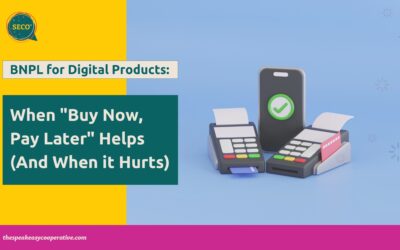So you’re ready to up your voice studio’s game and you’re starting to research the software and apps you need to do it. Dear Goodness on High, there is just so much one needs to know about business software.
Maybe you’re researching software for reaching new people, scheduling your appointments, or receiving payments. Maybe you’ve looked at email marketing software or project management tools.
And maybe—just maybe—you’re feeling overwhelmed. Okay, that’s probably not a maybe.
With all the business tools to choose from, how do we pick the right tool?
And how, then, do we actually learn the tools, when we feel like we aren’t tech savvy in the first place? Whether you’re building out your business for first time, or you’re beginning to move to a more tech heavy business model (such as online lessons!), it can be heart-crushingly overwhelming.
To go from using email for personal use to understanding an email management software feel like all the rules have changed. The frustration and confusion to go from using Venmo, or taking paper checks, and setting up a payment gateway, linking via API to your scheduler or client management system, and connecting your bookkeeping software is palpable.
It seems like everyone except you knows what the heck to do and how to do it – so you feel like you’ve missed a majorly important memo somewhere, and throw your hands up. I mean, you don’t even know what you’re trying to accomplish let alone which tool to choose to accomplish it! Does my system even make sense? WAIT – WHAT IS A SYSTEM? This whole thing just isn’t sustainable. UGH.
HOLY CROW, I’ve been there. And you would’ve told me that four years ago that I would even know what the heck an API was, and how it worked, and how each software tool I use fits into my tech stack (yes, I use phrases like “tech stack” now.), I would’ve laughed you out the door.
I mean, I thought I was FANCY for figuring out how to create a PayPal button for my website. And you know what? For my skill set and knowledge, I WAS fancy! Wherever you are in your “understanding tech” journey, celebrate that you know things now, many wonderful things, that you hadn’t known before. And I’m here to give you a framework, of sorts, to reduce the overwhelm of the journey.
It doesn’t have to be overwhelming and gross, when you apply a few rules of thumb to make the process easier.
Don’t start with the tech
This is probably the biggest mistake I see people make. As we begin to grow our businesses, we have probably absorbed some information from our self-study and research.
We think that we need: A website An email list A bookkeeping software A way to schedule people A way deal with getting paid A digital graphic design software Some sort of contact sending and signing and all that jazz software Some sort of communication with clients application Some sort of “dear Universe PLEASE help me keep track of all this” thing
And because we think we need these things, we immediately go about dutifully looking into ALL THE OPTIONS and then pick one with the best features, because that’s good, right?
I wish I could say it was. Alas, not so.
I want you to stop your tech searches right now and reframe how you are going to make decisions around this. Your new mantra is: Tech follows needs.
In order to pick tech, you have to know how and why, and for what purposes you actually need that tech – you may find out you don’t need something at all!
Do start with a system
Now, because the word “system” is used so often in the context of technology, we often think we are choosing systems when we are picking out the applications and digital tools we will use.
Not so – when we pick tools, we should be reviewing our systems – our actual checklist and standard operating procedures – to decide the tools. Not the other way around. Your tools aren’t there to determine your system. Your system is there to determine the tools.
If you aren’t sure about how to write a Standard Operating Procedure (SOP), I’d like to assure you that it’s not as fancy as it sounds. A good old fashioned checklist is a great place to start.
- Here’s an example: your client onboard (COMING SOON! AN EBOOK ON THIS FOR YOU!) Instead of picking a scheduler first, and in order to write your SOP, you’ll need to decide or document how you want to: Have a client reach out to you How and where your first conversation will take place If you need them to fill out a form or not How you want them to book their first paid thing with you
After you’ve made the decisions and reviewed your current processes, make a check list of the order of operations that happens – every little step. Yours may look like this:
- [ ] Receive inquiry
- [ ] Send follow up email (template)
- [ ] Offer phone call
- [ ] Book phone call
- [ ] Send Google Form to learn more about client
- [ ] Review form before call
- [ ] Have call
- [ ] decide to move forward or not
- [ ] if yes, send follow up email to schedule first lesson
- [ ] if no, send follow up email with tips on how to find their best tip teacher
- [ ] Assuming yes, schedule first lesson
- [ ] Do lesson
- [ ] Email proposal to move forward into a committed lesson plan
- [ ] Signed proposal received
- [ ] Book student out for length of term
- [ ] Begin!
You can see, just by writing down what I want the customers journey to be like, I now know that I need a few tools, such as:
- Phone
- Google forms or some other type of form
- Some sort of contract and signing delivery thingamabob
- a way to do the actual lesson, online or in person
- some sort of scheduler
You’ve got a ton of information now, and are ready to start searching! YAY!
Ask the right Questions
Now that you’ve got your system all figured out and gussied up, you may wonder how the heck you’re going to parse through all the options
Here’s what I like to do – decide:
- How fancy I wanna get
- How much I wanna spend
- How streamlined and efficient I wanna be
- How my current tools already support my system
If you decide that you’re good with text messages and a notepad, don’t invest in a scheduler. If you decide that you want them to book ahead of time, you know you have to research schedulers. From there, If you know you want all potential clients to fill out forms, be able to pay you though the scheduler at time of booking, and have them get reminder emails, then you know you need to look for a scheduler that does those things! (Not all do!)
From there, you can start the Googling. Use search terms that are inline with your needs. If you aren’t sure what type of tools you could be searching, you can ask people you know already use these tools – chances are they’ve done the research already and have reasons they’ve chosen their desired tools! Ask them about this too. Don’t be shy – we literally do this DAILY in The SpeakEasy Cooperative.
Once you’ve got some names of the tools, I suggest you google “compare [insert names of softwares]. I can almost guarantee that some blog has done this work for you. Be sure the date on the blog is recent. (It is true that there are softwares for blogs that just make blogs LOOK recent, even if they aren’t, but don’t stress too much on that.)
Once you’ve done your “compare” search, spend time on each products website, schedule a demo, and check to see that it does what you need it to do, or, at least offers a way to integrate into other softwares that will.
As you’re researching, you may come up with a tool you already own and use! Which leads me to my next point – to be sure you’re up to date on the fanciness of your current systems and tools.
Do learn your current systems and tools better
I know this seems kind of obvious, but hear me out.
Software companies are developing and re-developing and adding features ALL THE TIME. If you’ve had a piece of software for a long while, you may actually know less about it than someone who just purchased it.
Take some time to dig into your current softwares and poke around to see if it does what you need it to do, and it’s more a matter of you learning how to use it. Google, YouTube, and Facebook are really excellent places to start learning about your software tools. Many companies have robust help sections that have embedded videos. Many really popular softwares also have third party supporters who create how-to’s and such that can be found on YouTube. And, each company may have official and unofficial Facebook groups where you can search or ask questions.
In fact, checking out the level of customer support a software tool offers is another great way to vet software and/or plug-ins for your website. How old is the product? How often is is updated? What are the customer service ratings? And, how robust is the help section? Another thing you may consider looking into is how you can get in touch with them. If you are better with phone service, choose a software that offers phone support in addition to chat and email.
Often times, our current tools will do the job just fine – and the thing to invest is our time and mental space on learning it better. There’s a learning curve either way, but the slope of the continued curve is less steep than a brand new curve.
In the end, it’s the systems that sustain you, not the technology.
It is super tempting (hello shiny object syndrome!) to purchase new tool and tech as a way to feel more business-y. I’m pretty sure that’s because it’s a tangible and measurable action that we can take to feel like we’ve moved ourselves forward.
It’s waaaaaaaay sexier to buy a new iPad than it is to write a standard operating procedure, and it’s waaaaaaaay more fun to play with a new email system than to write out templates and save them in a folder or Gmail.
Still, if your system isn’t in place, you’ll never be satisfied with your tools and tech, truly. The real problems we are so often trying to solve, such as getting more time back, having a smoother onboarding system, reducing boring/repetitive actions, or handling payments better can be solved with a good think before we purchase a good application.
Starting with systems is the least abrasive and overwhelming way to handle our tech questions. Creating them motivates us to invest in and learn only what we need to, choose what is in line with our current and upcoming needs, and make choices that are empowering rather than daunting.
As you grow in your skill and knowledge, your system may change, and then, you’ll know exactly what to ask of the current, and maybe even new, tools that will allow you to implement your upgraded system!
You can totally do this. You’ve learned so many things before… and you’ll continue to learn so many thing throughout life!
The systems you’ll create will give you a clear picture of how you run the show. They will sustain you and keep you from making the same decision over and over again.
They will give you a framework to flow from.
And if you need a tool to help you do that, so be it!
How do YOU choose your tech? Got something I didn’t think of, or a question to ask to dig into your next steps? Leave a comment and let me know!
All My BeastyBoss,

P.S. Last Monday, I did a FB live on this – so if you’d prefer a little conversation around it, join me here and tell me whatcha think on the replay!
P.P.S Have you heard of the new How to Run Your Biz Without Hating Your Boss Accelerator? We’ve got ONE SLOT LEFT. Read up and if you’d like to book a call, email us at hey@faithculturekiss.com… we’ll get you in for a call before we begin in May.






0 Comments